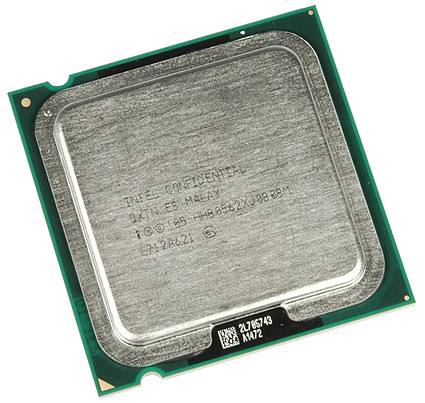Extreme FSB 2: The Quad-Core Advantage?
QX6850, Q6600, What?
Several happy readers have reported that their recent Intel Core 2 Quad Q6600 purchases contained two G0 revision dual-cores (four cores total), but not everyone has been so lucky. The best way to find out whether the processor you're buying has the new cores is to open the box and look at its markings, but most buyers can't do that. A few sellers will happily screen their samples for the best cores and charge extra for these, but other buyers must instead wait until all the older parts are flushed out of the distribution channel.
An easier way to make sure you get the latest stepping revision is to buy the latest high-speed processor model. In this case, we used our previously-tested Core 2 Duo E6750 and added a Core 2 Extreme QX6850.
Intel doesn't make a Q6750 - at least not yet. To cancel out the difference in frequencies, we tested both processors at the E6750's 2.66 GHz and the QX6850's 3.00 GHz before moving on to test each at is highest stable speed. The QX6850 was happy to run at the E6750's stock 8x 333 MHz core clock rate, but the E6750's maximum 8x multiplier meant it couldn't be set to the QX6850's stock 9x 333 MHz. Instead, the E6750 had to be set at 8x 375 MHz to reach the QX6850's stock 3.00 GHz.
Owners of Core 2 Quad Q6600 processors are welcome to validate our results at both settings, since these units support a multiplier range from 6x to 9x.
Get Tom's Hardware's best news and in-depth reviews, straight to your inbox.
Current page: QX6850, Q6600, What?
Prev Page Can More Cores Beat More Clock Speed? Next Page High-Speed Hardware

